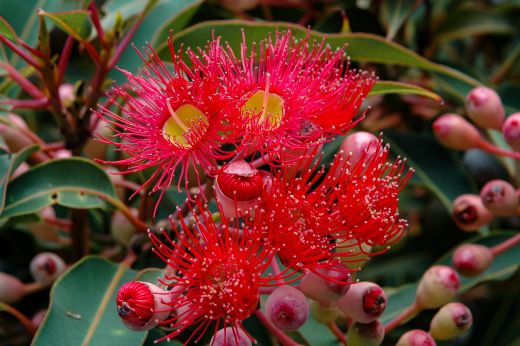
Researchers from the University of Tasmania were part of an international team that has assembled a eucalypt genome whose evolution can be traced back around 60 million years, after the last mass extinction event recorded on Earth.
The genome of the spotted gum is the second fully-assembled reference genome published for the eucalypt group. It will be the reference genome for the genus Corymbia, known as the bloodwoods.
University of Tasmania Emeritus Professor of Forest Genetics Brad Potts said the decade-long project involved the collaborative efforts of 22 scientists from Australia, the United States and Brazil.
"This reference genome will be invaluable for future gene discovery and help the breeding of bloodwoods for uses including carbon sequestration, as well as timber and essential oil production," Emeritus Professor Potts said.
"Achieving these full genome assemblies are mega projects. It is one thing to sequence a genome but quite another to stitch the millions of tiny bits of sequence together into chromosomes and reliably position genes – especially when done independent of other genome assemblies to allow comparative studies."
Corymbia includes around 100 species from primarily northern and eastern Australia. It is the closest lineage to the main eucalypt lineage - Eucalyptus - which comprises over 750 species and dominates much of Australia's forests and woodlands.
The species chosen for sequencing grows naturally along the north-east coast of Australia and is grown in plantations in Queensland, northern New South Wales, and other countries such as China, Brazil and South Africa.
University of Tasmania plant scientist Dr Jakob Butler said that Corymbia and Eucalyptus showed extensive similarity in genome structure despite their ancient separation.
"While surprising, this is useful from a practical perspective for transferring information on which genes affect which traits," Dr Butler said.
"We also discovered key structural differences for the first time between these genera. Some of the differences found between Eucalyptus and Corymbia were in gene families related to disease inhibition and aridity adaptation.
"The assembly and annotation of the bloodwood genome helps cement the eucalypts as a model group for genomic research in forest trees."
The paper Pests, diseases, and aridity have shaped the genome of Corymbia citriodora was published in the journal Nature: Communications Biology.
The Corymbia reference genome is hosted by the US Department of Energy Joint Genome Institute and is accessible to scientists world-wide.
(Photo): A red flowering gum (Robert Wiltshire)






